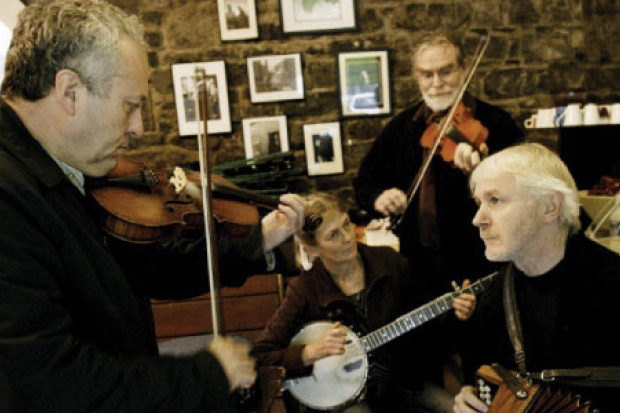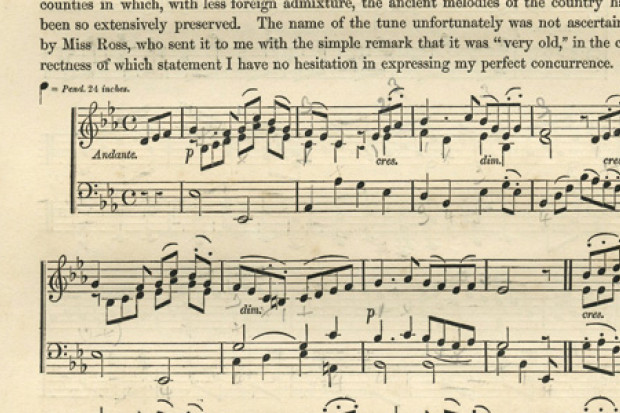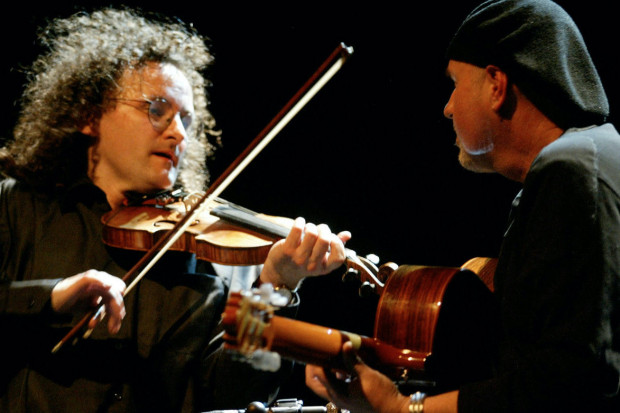CD Reviews: John Spillane & Louis de Paor: The Gaelic Hit Factory
John Sillane & Louis de Paor
The Gaelic Hit Factory
EMI, CDGHF1
John Spillane and Louis de Paor’s first album together, The Gaelic Hit Factory, brings a contemporary approach to Irish- language song, blending poetry and music, to provide an organic work of true merit.
Hugo Simberg’s painting of The Wounded Angel is reproduced conscientiously on the album cover to signify the impetus for the work. In this context, the wounded angel represents the plight of the Irish language which many believe to be antiquated (if not extinct), while the two boys helping the angel represent the artists. This image symbolises the artists’ belief that the Irish language can be used in a contemporary context, if given the chance.
The songs on the album are primarily in the Irish language, with four written in a macaronic style (texts written in English and Irish). The themes of this album, though local, have universal appeal. They speak of love, loss and the hardships of life. However, the local voice is particularly evident in the story of Ireland’s exiles described in ‘Bata is Bóthar’ (‘The Stick and the Road’) and through the use of local phrases in ‘Rugadh orm in Corcaigh’ (‘Rebeltown’). The occasional juxtapositioning of the mythical with the real provides an original element to the work. For instance, in ‘The Wounded Hero’ (‘Iníon Deichtine’) the courage of Deichtine’s daughter is recounted in order to instil confidence and determination in a disillusioned boy. (In Irish Mythology, Deichtine is the sister of the King of Ulster, Conchobar Mac Nessa, and the mother of Cúchulainn.)
The diversity of John Spillane’s song-writing ability is evident in the collection of songs on this album, ranging from the lyrical ‘Ag an gCóisir’ (‘At the Party’) to the short punchy phrases of ‘Buille mo Chroí’ (‘The Beat of my Heart’). The collaboration of John Spillane with producer John Reynolds has resulted in the imbedding of Spillane’s folk/trad vocal style into contemporary arrangements, varying from pop to drum ‘n’ bass styles. The lyrics emphasise the rhythm and euphony of the words, adding an extra musical quality to the songs. The seamless interweaving of voice, song and music in ‘Luíonn mo Ghrá’ (‘My Love Lies’) exemplifies the synergy of poet, song-writer and producer in this recording.
The comparison of the daughter on track 4 (‘Inghean’) to a mystical goddess, through the use of English-Egyptian singer Natascha Atlas’ cascading phrases, adds an exotic element to the recording. By reflecting on the ‘other’ in this album, we can recognise the significance of this album as an ‘other’ voice within the world music market. Indeed, John Spillane, Louis de Paor and John Reynolds have succeeded in bringing a local voice to the global market without losing its artistic credibility. The support of EMI for this project confirms that there is a viable market for Irish-language song. Here’s to more Gaelic Hits!
Published on 1 March 2007
Susan Motherway is a folk theatre and music technology lecturer at the Institute of Technology, Tralee.














